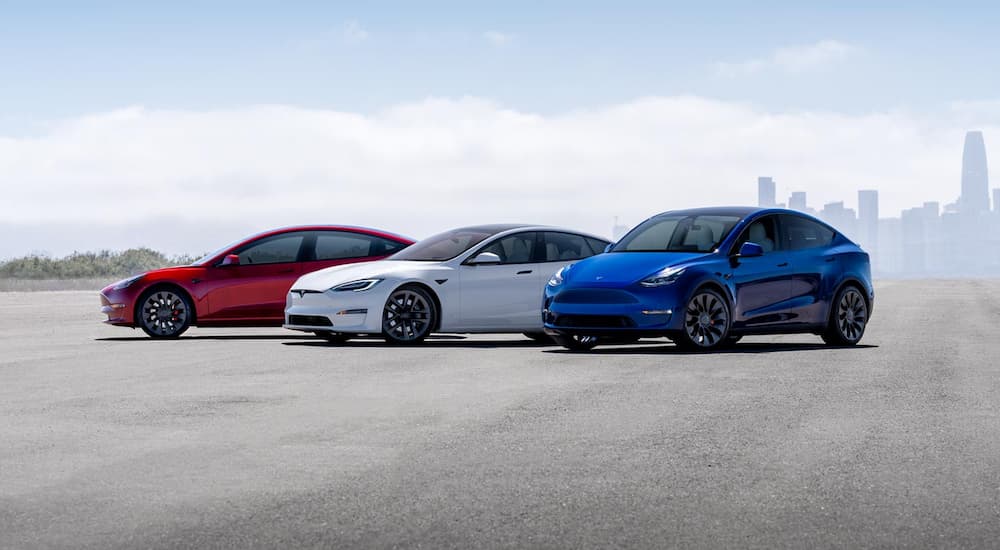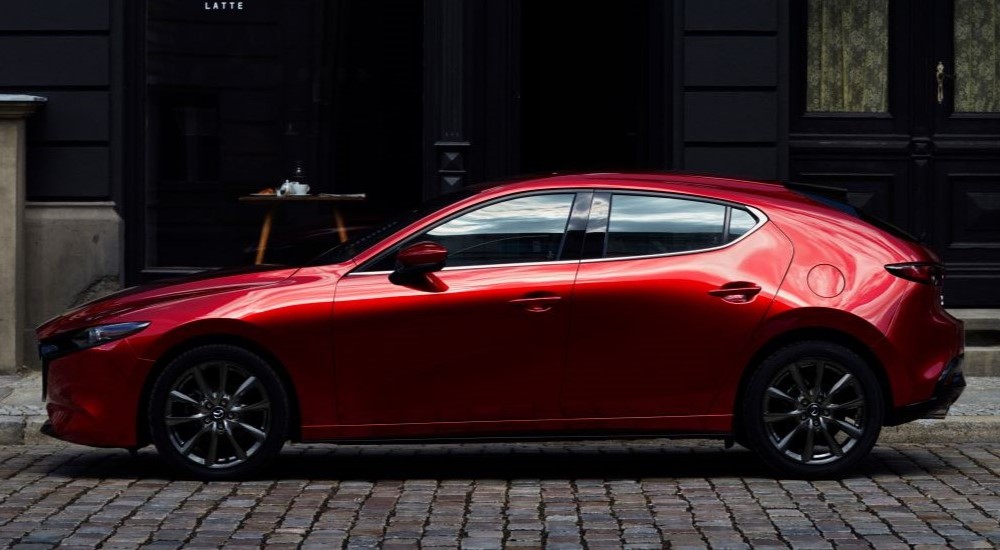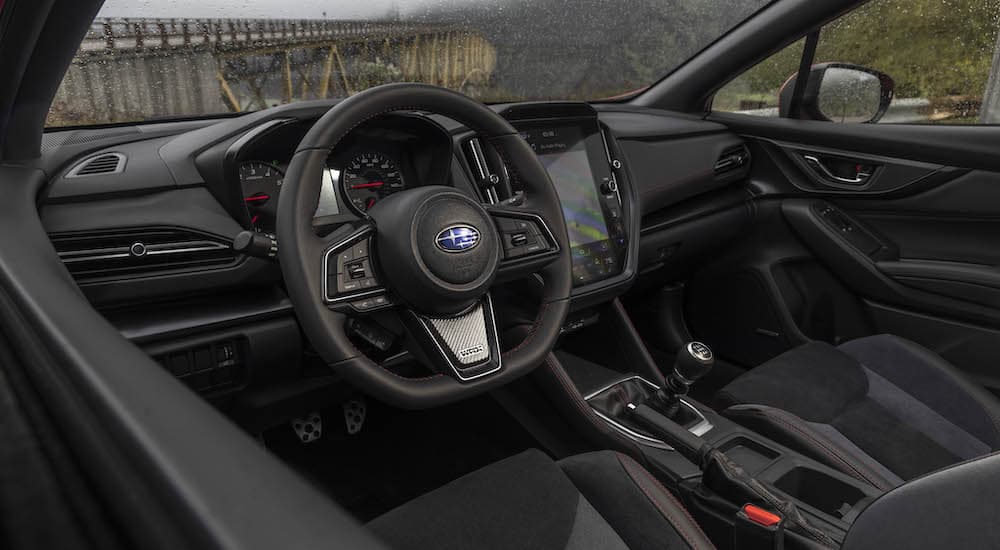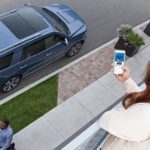Car keys have come a long way over the decades that they’ve been around. Early keys didn’t look too different from a house key, with teeth on only one side. One of the first innovations in car key technology was the double-sided key, which let the driver insert it into the ignition in either direction, a luxury that anyone who’s struggled to plug in a USB cable can appreciate.
In the 1980s, modern technology started to turn the car key into something more than just a piece of metal cut just so. Coded resistors were added, making cars harder to steal, and keyfob remotes gave drivers the ability to lock and unlock the doors at the push of a button. A few decades later, keyless entry and push-button start made it possible to lock and unlock the doors and start the car’s ignition without ever taking the keyfob out of your pocket or purse.
The keys of the past have had wildly different designs, but they all had one thing in common: they were physical objects. But in recent years, there’s been an even bigger shift in car key technology with the introduction of digital keys. With this technology, you can lock and unlock your car’s doors and start its engine without having a dedicated keyfob at all. All you need is your smartphone.
If you’ve started to wonder why every automaker has an app these days and is boasting about “connectivity” features in their lineup, then you’ve come to the right place. While digital keys or “smart keys” are designed to perform the same functions as the familiar keyfobs we’ve had in our pockets since age 16, there are some significant differences too. So let’s dive into this cutting-edge technology and what it has to offer you as a driver.
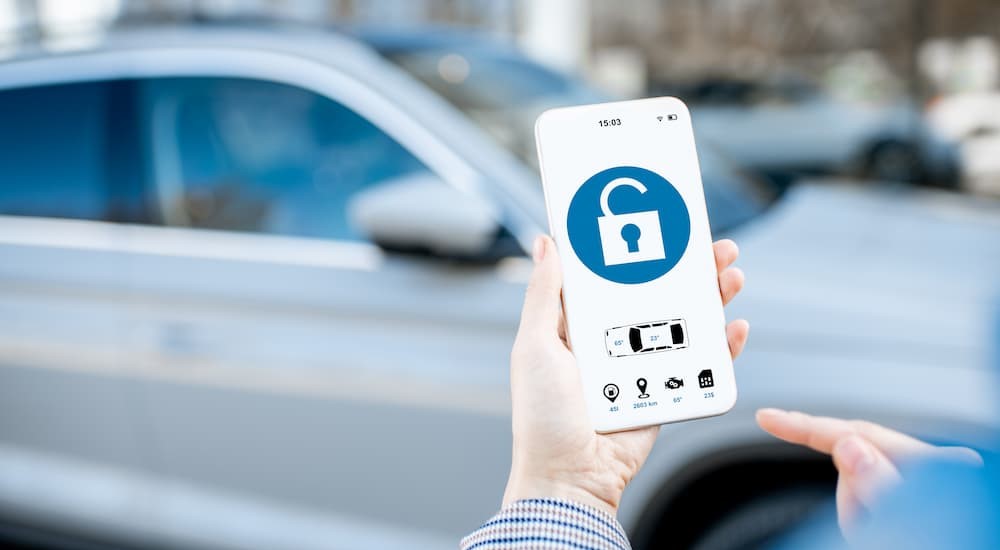
What Is a Digital Key?
A digital key is an app that basically allows you to use your smartphone as a car key. While the details vary from automaker to automaker, digital keys usually build on existing connectivity apps, adding the ability to use keyless entry and push button start as long as you have your phone at hand. This is in addition to the typical features of connectivity apps, such as locking and unlocking the doors and even starting the engine remotely. Often, you can also use the app to check diagnostics like fuel level (or charge level on EVs) and tire pressure or locate the nearest dealership, charging station, or service station.
What Benefits Does it Have?
The most obvious benefit of a digital key is that you have one less thing to keep track of. Instead of bringing both your phone and your keyfob with you every time you go for a drive, you can simply grab your phone and be good to go. The remote connectivity features also offer some unique advantages. For instance, if you’re at work and wondering whether you need to stop for gas on the way home, you can check your fuel level on the app. And one of the most heavily advertised pros of remote start is that you can get your car’s climate control system running before you get into the car, letting you get the AC going early on a hot summer day or the heat started while you finish your coffee on a cold winter morning.
Is it Secure?
Whenever a physical object is made digital, especially something as important as the key to your car, it’s natural to wonder about the threat of hacking. Carjacking is a serious concern in many cities, which makes security a top priority for many drivers. Automakers know this and are certainly working to make this technology both convenient and secure. Using technologies like ultra-wideband (UWB) and near-field communication (NFC) can help make digital keys less vulnerable to attacks. These are short-range connectivity technologies that utilize radio waves and allow for security measures like encryption to help keep your data (and your car) out of the hands of bad actors.
Of course, not all digital keys are created equally, so if you’re concerned about security, you should do some research into the particular automaker you’re interested in. But while it’s natural to be wary of new technology, keep in mind that none of the old systems have ever been perfect. The physical and remote keys of decades past haven’t always fended off car thieves either, so a digital key doesn’t have to be 100% secure in order to meet the standards that drivers are used to.
Does it Cost Extra?
With a physical key, you have a one-time cost that’s folded into the price of the car. Sure, you’ll have to replace the battery on your remote keyfob someday, but outside of the off chance that you need to replace a lost key, you’re pretty much good to go. However, the same is not necessarily true of a digital key. Often, apps that allow for connectivity features like remote start have a subscription model rather than a one-time payment. Many automakers will give you a free trial for the first year or so, but then you have to become a paid subscriber if you want to continue using the features. This does put you at the mercy of the automaker if they decide to raise the price in the future, so it’s something to seriously consider when deciding whether or not to get used to the convenience of a digital key.
Which Brands Offer Digital Keys?
The list of automakers offering digital keys on their vehicles is long, and it’s likely to get even longer over time. The brand that kicked off the trend was Tesla, and it is the only manufacturer that has abandoned physical keys entirely. Other American companies like Ford, and popular overseas brands like Toyota and Hyundai, all offer some version of a digital key in addition to physical keys. Even companies that have a more rugged, utilitarian reputation have jumped on board, like Subaru. And, of course, there are plenty of luxury brands selling this as yet another perk, like BMW, Mercedes-Benz, Lexus, Genesis, and Lincoln.
Our Overall Impression
As new as digital keys are, they’ve already been evolving and changing since they were first introduced to drivers in 2017. While early versions required you to hold your phone right up close to your door’s handle to unlock it, the range has improved, and now many brands allow you to enter your locked car without taking your phone out of your pocket. Sharing digital keys has also become easier. At first, you could only share your key with someone who had the same kind of phone as you, but recently Apple and Google have made it possible for iPhone users to digitally toss their keys to friends with Pixel phones and vice versa.
While many issues are being solved, there are still a few that persist. For one thing, technology has a bad habit of letting us down when we need it most, something that just about anyone who’s ever used a printer can attest to. Most keyfobs have some kind of physical key embedded into them, so you can still unlock and start your car if the battery dies. The same cannot be said for a digital key.
If your phone unexpectedly dies or malfunctions, then you’ll need to have a physical key on hand in order to get into your car. That’s not the end of the world, but it does undercut the selling point that digital keys are more convenient because you have one less thing to remember to bring with you. If the convenience of an app-based key appeals to you, then go for it. It shouldn’t be hard to find a model that offers these connectivity features. But if you’re a bit nervous about this technology and are willing to find room for your trusty keyfob, then go ahead and save yourself the subscription fees. Physical keys and keyfobs are still around (for now, at least) and are a perfectly fine way to access your vehicle.
